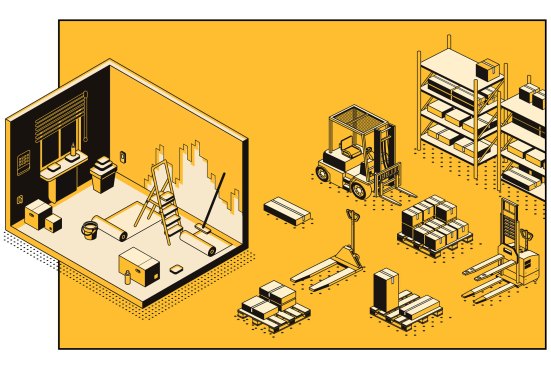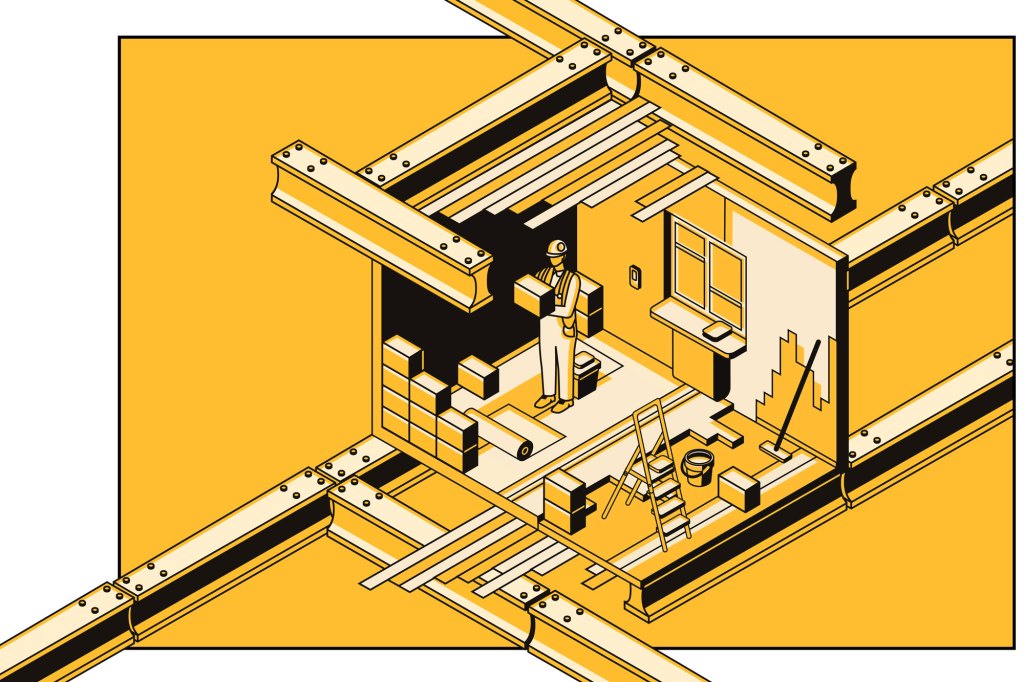In the U.S. home sales market in 2023, it’s been a true “tale of two markets,” with the new-home building market defying the odds against rising interest rates, inflation, and supply chain woes to beat out the country’s resale market that’s been struggling with low listings as owners stay put, wary of taking on a new mortgage with rates recently reaching their highest level since 2000. And this trend is expected to continue on into next year.
“The tale of two housing markets is expected to carry on into 2024, with the new-home market outperforming the resale market,” says Ali Wolf, chief economist for Zonda.
“There is one big caveat, however,” she adds. “We don’t expect demand from either camp to be as strong as what was experienced in 2023. Builders will still have the advantage, but price cuts or increased use of incentives will likely be needed given the affordability backdrop.”
Affordability—whether buyers were looking to purchase a new build or a resale home—has been the key marker of the last year, and that challenge will persist into 2024.
The latest data from Zonda shows there were 708,457 new homes sold in September at a seasonally adjusted annualized rate, which is down 0.2% from August but up 33% from a year ago. And despite rising mortgage rates, the new-home cancellation rate is lower than the latter part of 2022.
“Despite ongoing challenges in the market, the housing deficit of resale inventory continues to provide some market support for builders,” says NAHB chief economist Robert Dietz. “Because of a lack of existing homes in the marketplace, 31% of homes available for sale in August were new construction. This compares with a historical average in the 12% to 14% range. But in another sign that higher interest rates have slowed the market, the number of single-family homes under construction in September was 674,000, which is almost 15% lower than a year ago.”
Meanwhile, sales of existing homes in September was down 2% from August to a seasonally adjusted annualized rate of 3.96 million units—the lowest since October 2010, according to the National Association of Realtors.
Interest rates have been the big barrier to both resales and new-home builds. In a bid to keep skyrocketing inflation in check, the U.S. Federal Reserve has raised its benchmark interest rate 11 times since March 2022, when it was 0.25 of a percentage point, boosting it to 5.5%—the highest rate in more than 20 years.
“The tale of two housing markets is expected to carry on into 2024, with the new-home market outperforming the resale market.” —Ali Wolf, Zonda
However, the Fed continued its pause in early November and kept rates steady, although they remain at their highest level since 2001. What have these rate increases meant for buyers? A huge increase in mortgage rates.
During the shock of the pandemic, the Fed kept rates low and mortgage rates were in the 3% range. But the Fed’s rapid rise of its benchmark means mortgage rates are now as high as 8%—the highest since 2000, according to The Mortgage Reports.
“Home buyers proved a lot more resilient than expected throughout 2023 given the 6% interest rates. Rates have now been over 7% for two months and in the 8% [range] depending on the day, the lender, and the borrower,” says Wolf. “The rapid increase in mortgage rates over the past couple of months has proven to be a mental and financial hurdle for many buyers. As such, we are seeing many prospective buyers put their buying plans on hold for now.”
The home building market has faced turbulence over the past few years. In 2023, it was expected that the housing market would be slower, as it had been near the end of 2022, says Wolf.
“That, however, proved to be too negative of a forecast, especially for the new-home market. The way we have to think about 2023 is a tale of two housing markets,” she says. “The resale market spent the year in gridlock as many existing homeowners were reluctant to sell their home. Low housing affordability and tight supply kept a lid on resale activity.”
However, “in the new-home market, builders had a much better than expected year. In fact, one could characterize sales in the new-home market as ‘good’ through the first half of the year. Contrary to the resale market, builders had homes to sell and could work with buyers on housing affordability by offering incentives,” Wolf explains.
In his September Home Building Industry Report, Carl Reichardt Jr. from BTIG notes that August new SAAR sales were 675,000, down 9% from July and lower than expectations. But year-to-date sales were up 2% compared with 2022. “We note comps for the back third of the year are relatively easy (-22%), and, as such, we see potential for growth despite recently higher mortgage rates,” he explains.

Adobe Stock
“The current operating environment is uncertain, but we believe it remains buoyed by a lack of existing-home inventory,” Reichardt adds. “We continue to believe new-home sales will rise 5% year over year to 675,000 in 2023 and continue to grow modestly in 2024 (up 4% year over year to 705,000). We anticipate single-family starts will decrease 7% year over year to 903,000 in 2023 but grow year over year in 2024 (up 5% to 980,000).
Despite the high rates, Mike Forsum, president and chief operating officer of publicly traded Landsea Homes, feels there’s still promise ahead in 2024.
“We remain cautious and continue to watch how these [interest rate] increases translate into traffic and the willingness of our prospects to move forward with the buying process,” he says. “It’s yet another challenge for the home building industry, but I’m confident we will be able to overcome as we’ve done with previous challenges.”
The company is constantly evaluating the “headwinds of rising interest rates,” he explains. “We are continually identifying the best ways to respond and digest the interest rate market so that our homes remain attainable and affordable to buyers across the country.”
On the positive side, supply and labor disruptions are no longer a major issue as cycle times have improved, he adds. “In fact, getting labor on our jobsites and materials to our communities is at pre-pandemic levels.”
The lack of a robust, quality resale home market has meant buyers are more willing to look at new builds, Forsum explains.
“We have heard and seen in all of the markets where we operate that there are limited homes available from the resale side. This has made new-construction homes the go-to for housing and has worked in our favor,” he explains.
Landsea has also been strategic as interest rates more than doubled in the past year, Forsum adds, not only with incentives but also financing and planning.
“We were able to buy down rates that people were willing to accept, and as life circumstances still required people to purchase new homes. It has taken some adjustments, but we’re doing our best and believe in the quality and overall value proposition of our homes,” he says.“We are continuing to be thoughtful and strategic in terms of our spec start strategy. We are still seeing the majority of buyers looking to close their home within a 40- to 60-day time frame in order to better manage the current interest rate volatility. In so doing, we are working hard with buyers to select the financing option that works best for their current housing needs and timeframes.”
“The current operating environment is uncertain, but we believe it remains buoyed by a lack of existing-home inventory.” –Carl Reichardt Jr., BTIG
For John Judd Sr., co-owner with son John Judd Jr. of Judd Builders, a custom home builder based in Asheville, North Carolina, he’s seen strong interest in new-home builds by retiree clients who can buy with cash. “A lot of them are deciding that this is a good time to buy,” he says.
It hasn’t been easy for the entire home building market, he says, and demand depends on your location and what product you’re offering. “Some of the track home builders had to scale back because interest rates knocked out some of the people that were already committed.”
The outlook for the custom home building market is still robust, he says, and the company’s backlog is strong through 2024 and into 2025 as more Americans, particularly retirees, want to move to the area, attracted by its temperate four-season weather, easy access to good health care, and variety of activities and attractions.
Many people put their home building plans on hold during the pandemic and then had to wait as supply chain issues disrupted their plans again, Judd explains. Now they just want to go ahead, particularly as lumber and other building prices have started to come down, or at least are no longer rising exponentially. However, there are still some supply chain challenges, particularly for windows, cabinets, and appliances, so those are some of the first orders placed when construction begins. “You can’t count on anything in the appliance world.”
Interest rates also haven’t been a problem for the company either, Judd says, as it doesn’t carry any debt and isn’t borrowing money to build spec homes but are funded directly by clients.
The other bonus is that the resale market in the area is not strong, and what is for sale is expensive—upward of $1 million—and hasn’t been updated. “A lot of the homes that are for resale, nothing has been done to them since the ’80s and ’90s,” he says. “People look at it and say ‘well, I’m going to spend another $300,000 to $400,000 trying to make it what I want so I might as well just buy or build new.’”
“I think what’s driving our new build market, too, is just low inventory,” adds Judd.



